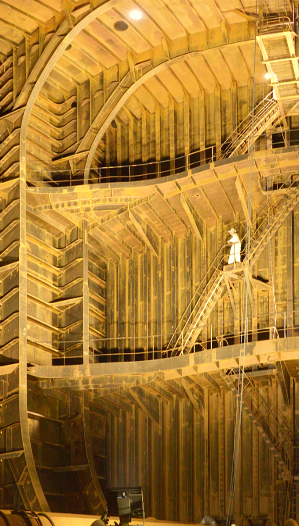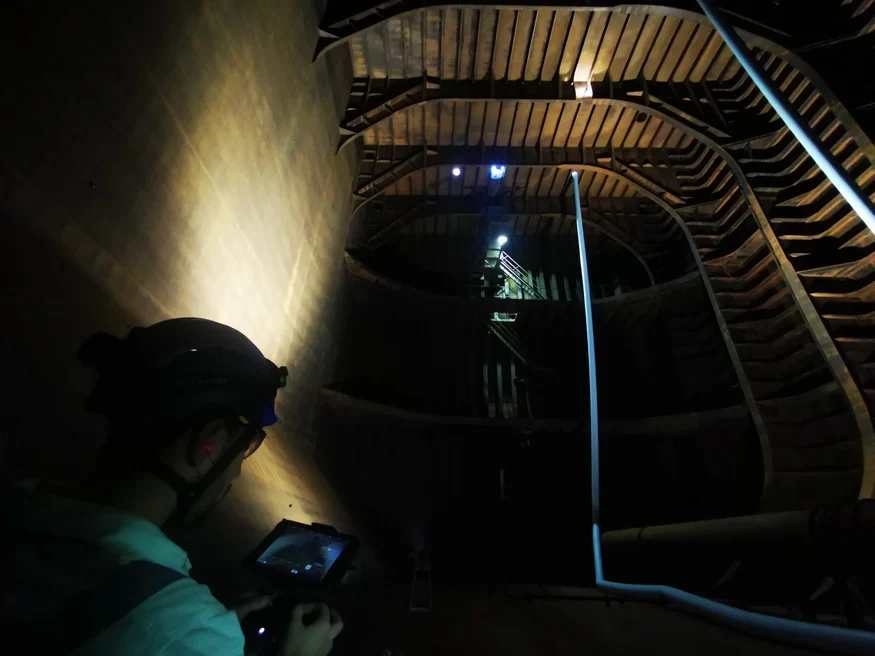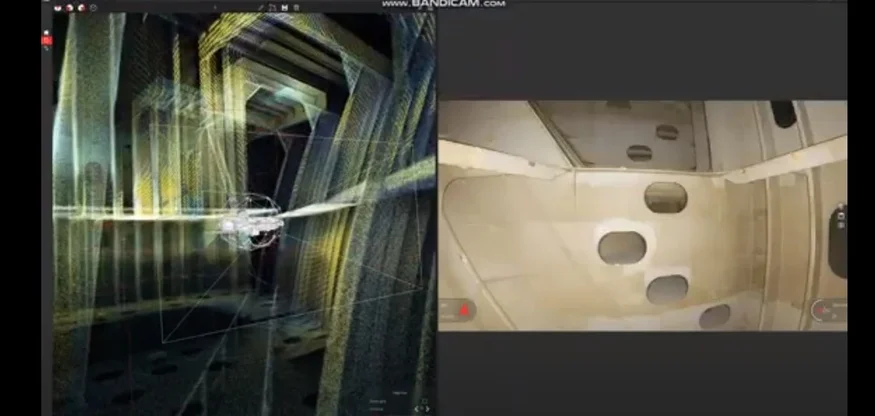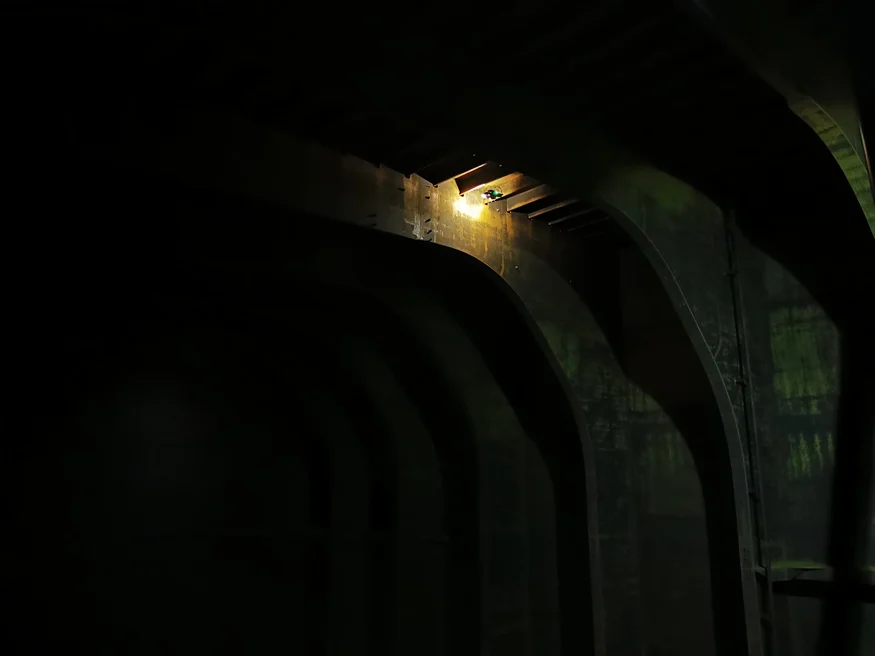C-Bird used the Elios 3 to inspect the hull of a cargo ship, achieving results that were safer, faster, and more efficient than ever before. SAFETY: The use of the Elios 3 eliminated the need for scaffolding in cargo tanks, saving approximately 10,000 hours of work at height in confined spaces. COST SAVINGS: By replacing scaffolding with the Elios 3, C-Bird achieved a direct cost saving of around $1 million during the vessel survey, along with time and logistics savings. ENVIRONMENTAL BENEFITS: Drones avoid the environmental impact of rafting, which can generate large volumes of oil-contaminated water requiring treatment and disposal. DATA QUALITY: The onboard LiDAR on the Elios 3 enabled precise data localization and easy sharing of findings with all stakeholders. Over 90% of the world's cargo vessels are governed by the International Association of Classification Societies (IACS) Common Structural Rules (CSR). These rules set standards for design, construction, and operation. Vessels must renew their class certification every five years, and a major part of this process is the hull survey, assessing the structural integrity of the ship. Crude oil tankers face some of the most challenging inspections due to the difficulty of accessing critical areas within the cargo oil tanks (COTs). Traditionally, this has required either building scaffolding or filling the tanks with water through a process called rafting—both of which come with significant risks and costs. The scale of a cargo tank is massive — scaffolding here can rise tens of meters high, making detailed inspection extremely challenging. As ships age, the complexity and cost of hull surveys increase. For vessels over 15–20 years old, the cost of erecting scaffolding alone can exceed $1 million, representing a large portion of the total project cost. In addition to financial implications, scaffolding also introduces safety risks, including exposure to working at height in confined spaces and the risk of foreign objects being left inside the tanks. On the other hand, rafting poses its own challenges, such as the disposal of large volumes of oil-contaminated water, which can be both costly and environmentally damaging. A U.S.-based oil tanker operator needed to conduct a No. 4 Special (20-year-old) periodical survey on one of its vessels. The 250-meter ship, classified by the American Bureau of Shipping (ABS), was undergoing dry docking in Southeast Asia for class renewal and other maintenance tasks. The company had been using C-Bird’s services for several years, relying on the Elios 2 for close-up inspections. This collaboration had already significantly reduced the need for scaffolding during class renewal surveys. Now, the goal was to conduct the hull survey using the Elios 3 with minimal or no human entry into the hull, reducing risks while still gathering all necessary data. Initially, an underwater ROV was considered, but C-Bird’s experience with the Elios drones led them to choose the drone instead, given its versatility and efficiency in such environments. C-Bird pilot Malcolm Connolly, who had previously used the Elios 2, opted for the new Elios 3 for this specific mission. He wanted to take advantage of the LiDAR live map to navigate areas where visibility was limited. He also tested the new UT payload for ultrasonic thickness measurements. Malcolm guides the drone through the empty space during the hull inspection. The drone was flown into the cargo tanks without any personnel entering the space. Malcolm flew around the entire hull, capturing 4K video footage and simultaneous 3D LiDAR scans of the structures. The collected data was then imported into Inspector 4 for processing. After processing, the comprehensive results provided clear visualization of the entire space, eliminating uncertainty about what was surveyed and where anomalies were found. The 3D scan combined with video footage ensured accuracy and clarity. The Elios 3 provides LiDAR data alongside visual feeds during the inspection. The Elios 3’s 3D Live Map proved invaluable, allowing C-Bird to ensure full coverage of the required areas without needing to enter the cargo oil tanks. This not only improved safety but also streamlined the process by eliminating the need to move equipment in and out of the tanks, reducing the risk of dropped objects and minimizing manual handling efforts. Malcolm Connolly, CEO and founder of C-Bird, emphasized the value of the Elios 3. “The 3D laser scan from the Elios 3 allows for accurate data localization,†he said. “This brings us closer to true risk-based asset management and automation. The ability to reliably localize data means we can repeat surveys precisely, measure changes over time, and even model degradation rates using machine learning to predict optimal maintenance points.†He highlighted several key advantages of the Elios 3, including: Thanks to the Elios 3, C-Bird completed a safer, faster, and more efficient hull inspection. By avoiding scaffolding, they saved over 10,000 hours of work at height. C-Bird and their client both appreciated the simplified logistics and the environmental benefits, as the drone eliminated the need for water-filled tanks that could contaminate the environment. They also recognized the drone’s potential as a viable alternative to traditional underwater ROVs for hull inspections. The Elios 3’s 3D mapping provided enough accurate data for the class renewal, helping inspectors identify key areas of interest. This contributed to the successful reclassification of the vessel. The case study highlights how advancements in drone technology are reshaping the marine industry, offering innovative solutions that meet evolving needs. Neodymium Magnet Plate,Neodymium Block Magnets,Gold Plated Neodymium Magnets,Gold Plated Magnets Dongguan Zhenglong Magnet Co., Ltd , https://www.zlmagent.comRemote Hull Inspection Saves $1 Million Using the Elios 3
Key Benefits at a Glance

Searching for a Safer and More Efficient Inspection Method
Inspecting the Ship’s Hull with the Elios 3 Drone


How the Elios 3 Transforms Hull Inspections in Maritime

Streamlining Hull Inspections with Drone Technology